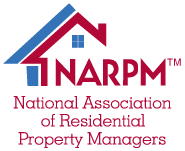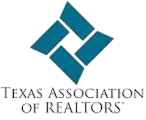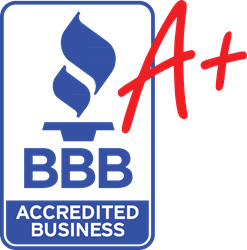In the competitive Texas real estate market, landlords and investors are turning to the Texas 1031 exchange to grow their real estate portfolio while minimizing tax liabilities.
This strategy allows for deferring taxes on capital gains by reinvesting in a property of equal or greater purchase price, provided that strict IRS rules are followed.
Missteps, like failing to identify replacement properties correctly or including non-qualifying assets such as non-permanently attached structures, can trigger a taxable transaction.
This guide outlines what qualifies, how to stay compliant, and why working with experienced financial advisors is key to maximizing your exchange benefits.
Understanding the 1031 Exchange
A 1031 exchange, also known as a like-kind exchange, enables investors to swap one investment property for another without incurring capital gains taxes immediately.
Named after Section 1031 of the Internal Revenue Code, this powerful tax strategy offers substantial tax deferral benefits for investors looking to grow their investment portfolio through strategic real estate exchanges.
Instead of paying federal capital gains taxes on a property sale, you can reinvest the sale proceeds into a replacement property—provided you follow the strict rules set by the Internal Revenue Service (IRS).
What Property Types Qualify for a 1031 Exchange in Texas?
Not every piece of real property qualifies for a tax-deferred exchange. Below are the key criteria that Texas investors must meet to ensure eligibility.
1. Held for Investment or Business Use
Only investment properties or those used in a trade or business qualify for a 1031 exchange. Acceptable examples include:
- Rental properties such as single-family homes, apartment buildings, or duplexes
- Commercial properties like a shopping center, an office building, or a commercial building
- Vacant land held for development or resale
- Agricultural land and ranches
- Properties located in Texas and used solely for generating income
A 1031 exchange excludes personal property such as your primary residence or vacation home, inventory, or properties held primarily for resale, and stocks, bonds, or partnership interests.
2. Like-Kind Property Requirement
The IRS defines like-kind property broadly. In essence, any exchange of real estate held for investment or business qualifies—regardless of type. Examples of qualifying like-kind exchanges:
- Swapping rental properties in Dallas for commercial real estate in Austin
- Trading a shopping center for multiple apartment buildings
- Exchanging a vacant lot in San Antonio for a warehouse in Houston
The properties involved must both be located in the U.S., and real property cannot be exchanged for personal property.
3. Fair Market Value & Replacement Rules
To fully defer capital gains taxes, the replacement property must be of equal or greater fair market value than the relinquished property. Additionally, you must reinvest all sale proceeds and take on equal or greater debt, if applicable.
The IRS allows you to identify up to three properties, regardless of their value, or multiple properties as long as their combined fair market value doesn’t exceed 200% of the relinquished property’s value.
4. Strict IRS Deadlines
Timing is everything in a 1031 exchange:
- 45-Day Rule: You must identify potential replacement properties within 45 days of selling your relinquished property.
- 180-Day Rule: You must acquire the identified properties within 180 days of the initial sale or by the due date of your federal income tax return, whichever comes first.
These deadlines are firm, and failure to comply results in a taxable gain.
5. Use of a Qualified Intermediary (QI)
A qualified intermediary is required to handle the transaction, hold the sale proceeds, and ensure compliance with IRS regulations. You cannot take direct control of the funds at any point. Your QI must be an independent third party—not your attorney, broker, or real estate agent.
6. Texas-Specific Property Trends
The Texas real estate market offers a broad range of property types that are ideal for 1031 exchanges, including:
- Commercial real estate in booming metros like Houston and Dallas
- Multifamily units in Austin and San Antonio
- Vacant land for future development in rural Texas
- High-value rental properties in university towns and coastal regions
Thanks to no state income tax and a strong rental demand, Texas is a hotspot for real estate investors looking to improve cash flow, scale their investment objectives, and defer capital gains taxes.
Other Considerations for 1031 Exchanges in Texas
- Reverse exchange: Buy the replacement property before selling the original. More complex, but still allowed.
- Related party exchanges: Permitted under specific conditions but closely scrutinized by the IRS.
Conclusion
Navigating a 1031 exchange in Texas requires strategic planning, a deep understanding of IRS guidelines, and professional guidance. By reinvesting in qualifying real estate, Texas property owners can upgrade their assets, improve cash flow, and defer capital gains taxes—all while staying compliant with federal regulations.
Whether you're offloading an aging rental property or consolidating multiple units into a newer commercial property, the opportunities in Texas real estate are abundant.
Let Residential Leasing and Management Co. be your expert guide through every step of the 1031 exchange process. Our experienced team helps you identify the right properties, meet IRS deadlines, and achieve your investment goals—while minimizing your tax liability.
Contact us today to take full advantage of your next real estate exchange!
FAQs: What Properties Qualify for a 1031 Exchange in Texas? A Complete Guide
Q1: Can I exchange a rental property in Texas for a commercial building in another state?
A: Yes. As long as both are real property used for investment or business, and both are within the U.S., the exchange qualifies under like kind exchange rules.
Q2: Can I live in the replacement property after a 1031 exchange?
A: Not immediately. The property acquired must be held for investment for a reasonable period—generally two years—before considering personal use.
Q3: Can I exchange into multiple properties?
A: Yes. You may identify up to three properties, regardless of their value, or more if their combined fair market value is within 200% of the relinquished property’s value.
Q4: What happens if I receive cash or a lower-value property during the exchange?
A: Any leftover cash or fair market discrepancy may result in a taxable gain, reducing the tax deferral benefits of your 1031 exchange.
Q5: Who should I consult before doing a 1031 exchange?
A: Work with a qualified intermediary, tax professionals, and trusted real estate professionals to ensure a smooth, compliant, and profitable exchange.
Q6: Is a 1031 exchange worth it for small investors in Texas?
A: Absolutely. Even for small real estate investments, the ability to defer capital gains taxes and reinvest full proceeds into income-generating replacement property can greatly accelerate your investment objectives.
Additional Resources:
The Role of Technology in Modern Property Management
The Best Neighborhoods in Houston: Finding Your Next Real Estate Investment

.webp)






